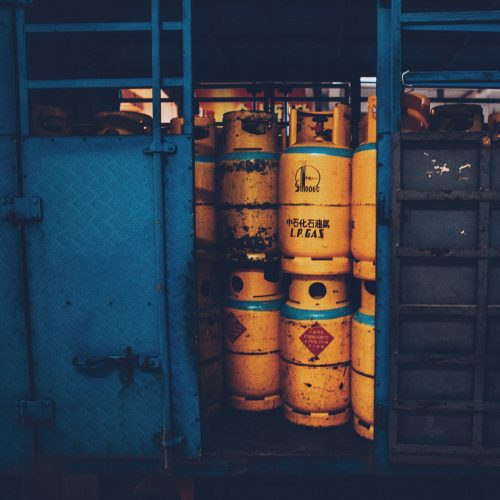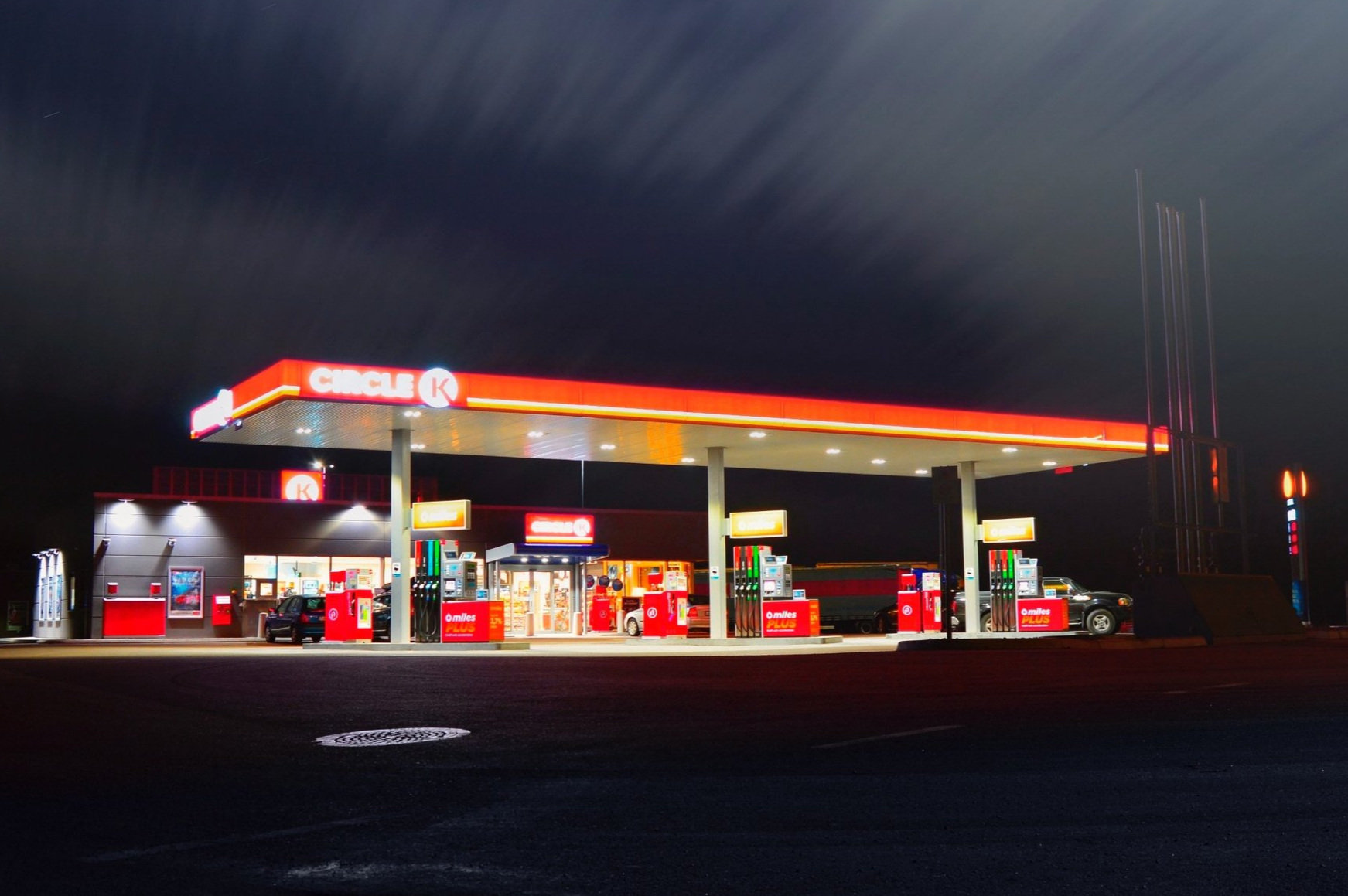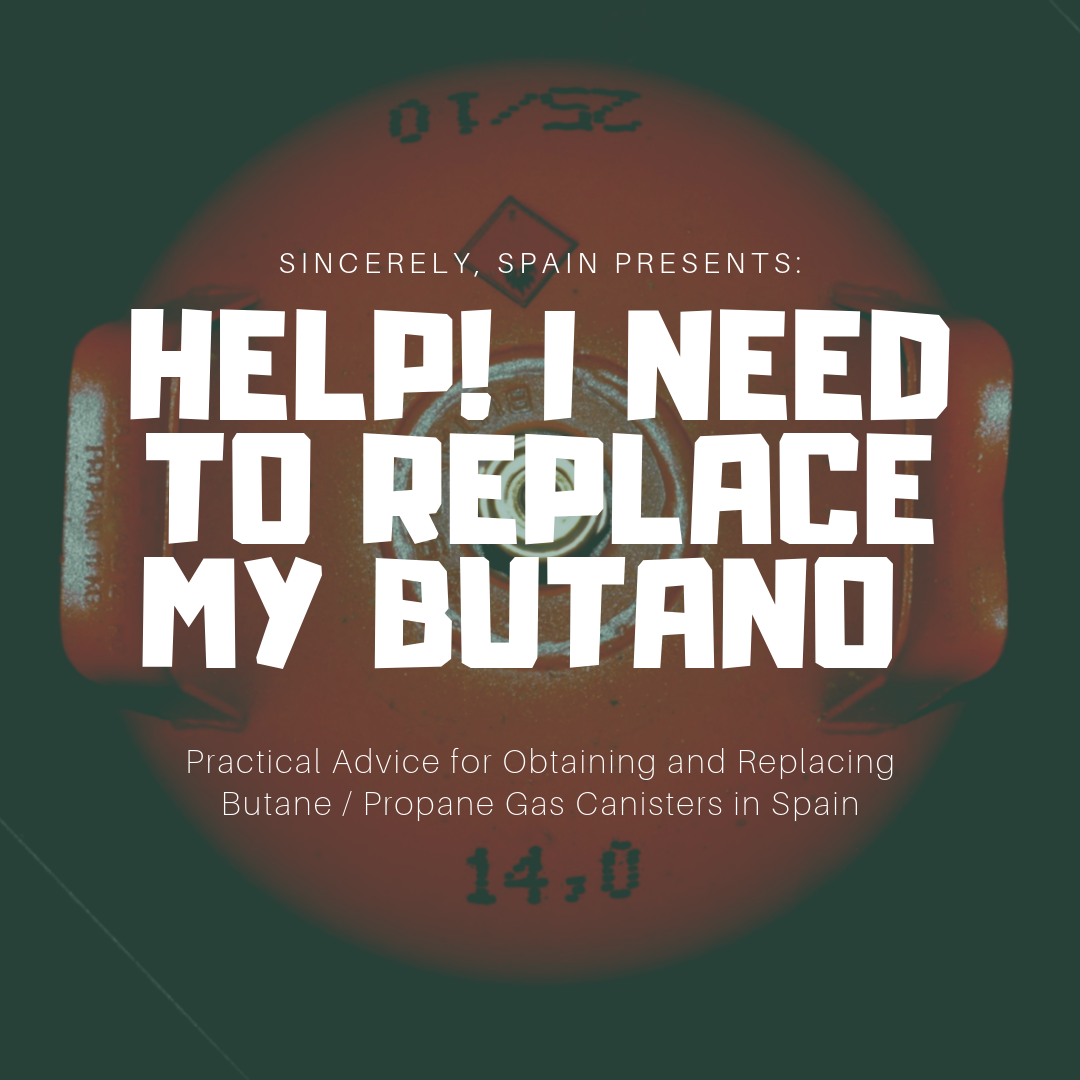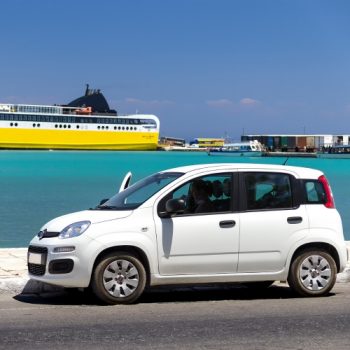
Help! I Need to Replace my Butano
Dear Carli,
One of the mini-culture shocks I experienced when moving to Spain was the realization that having water heaters, stoves, and/or radiators heated by butane or propane gas is quite common in Spanish homes. However, there is no system for this gas to be pumped into the aforementioned systems automatically; you have to obtain bottles of the correct gas yourself. Back in the U.S. I’d only ever seen propane gas bottles attached to outdoor grills but beyond my limited barbecue experience I knew nothing about dealing with gas!
Thankfully, I had informed and helpful Spanish roommates for my first few years living here and I’ve since adapted quite well to the process of ordering, receiving, and reconnecting our bombonas de butano (butane gas tanks) or bombonas de propano (propane gas tanks). These are my top tips for a successful overall experience:
Ordering new bottles
The easiest method of getting new bottles of gas is to order them from your local provider which will make home deliveries.
1.) Obtain the correct company’s phone number from your landlord, someone in your building, or a quick internet search: The gas companies in Spain have strict boundaries for the areas they service and so, for better or for worse, you only have one company that is legally allowed to deliver to your house. Be sure to contact the right one as, if you don’t speak to someone directly, they will likely not inform you of your mistake and will simply not fulfill your order if you make a request with the wrong provider.
 2.) Call, DON’T fill out the request online: Perhaps in bigger cities like Madrid and Barcelona the online service works well but in Granada the online requests often go unanswered. I also recommend calling during business hours (8am – 2pm) in order to speak to someone who will note down your order. As with the online forms, the voicemail recordings will claim you can leave a message with your order but my experience is about 50/50 of those orders actually getting delivered.
2.) Call, DON’T fill out the request online: Perhaps in bigger cities like Madrid and Barcelona the online service works well but in Granada the online requests often go unanswered. I also recommend calling during business hours (8am – 2pm) in order to speak to someone who will note down your order. As with the online forms, the voicemail recordings will claim you can leave a message with your order but my experience is about 50/50 of those orders actually getting delivered.
Pro-tip: When you call, be prepared to provide your address and the number of bottles you need. For example, one bottle of propane would be “una bombona de propano” and two bottles of butane would be “dos bombonas de butano.” While the most accurate term for this small tank is bombona I find most of the delivery men themselves refer to them by the more general term botella and so I have started doing so as well.
3.) Ask when you can expect your delivery and plan to be home for the entire morning (prior to 2pm) that day: I’ve tried to nail down a general time at which the delivery man will be in my neighborhood and I’ve never had a person tell me more that the day. Unfortunately, the system is simply that you’re at the whims of their delivery schedule. Thankfully, with experience you may be able to estimate what time of day they usually get to you.
Installing new bottles
Manually hooking up your bombona is something that takes practice and you likely won’t have previous experience with, but here are the basics.
1.) Remove the original bottle: by rotating the valve or flipping down the switch (depending on model) to cut gas flow. Next, cup the regulator between your index fingers and thumbs, pushing together until it clicks, the regulator will then be free of the bottle and you can remove the empty bottle.
 2.) Then connect the new one: by holding the regulator above the gas canister while you grasp the retaining ring of the regulator with your index fingers and pull it upwards while then lowering it onto the top of the gas bottle. When you are in the right position push the bottom of the regulator back down until you feel it click, then you can open the switch or turn the valve knob to the left. Your gas will now be running.
2.) Then connect the new one: by holding the regulator above the gas canister while you grasp the retaining ring of the regulator with your index fingers and pull it upwards while then lowering it onto the top of the gas bottle. When you are in the right position push the bottom of the regulator back down until you feel it click, then you can open the switch or turn the valve knob to the left. Your gas will now be running.
3.) For best results, ask someone to show in-person: If you have some experience, the above will serve as a nice checklist to ensure you’ve completed the right steps. If you’re completely new to this, I highly recommend asking someone to show you and supervise as you practice a few times as getting it wrong could be dangerous!
Plan Ahead + Plan B
Overall, taking some time to get to know the general delivery schedule as well as your average gas usage will save you headaches.
1.) Always have an extra bottle on-hand: After a certain amount of times in which you’ve called too late and had to go without hot water or heating, you learn to always have back-up. In the past, I only had a hook-up for one gas bottle so I would always have one extra. Now that we have hook-ups enough for two, we always order two extras. This allows you sufficient time (with gas) between running out of your canister and getting the next one delivered.
Pro-Tip: If the person who lived in your flat ahead of you did not seem to follow this advice, beware that getting yourself a back-up bottle might be a little trickier. In general, the gas company requires you to return a bottle each time you purchase one or to pay a ‘start-up fee.’ Check with your landlord and/or gas company to see if you can get around it.
2.) Get familiar with the days deliveries come to your neighborhood: It took us approximately 6 months living in our current apartment to realize there was a rhyme and reason to the fact that sometimes our deliveries came the next day and sometimes they took 3 or more days. There are generally only certain days of the week that your area will be serviced so don’t be afraid to ask when you make your order. Personally, we can only get home-deliveries on Tuesdays, Thursdays, and Saturdays so we try our best to call during early business hours the day before one of those days. Still, being able to estimate how many days/weeks we tend to get out of our gas canister (highly dependent on whether it is summer or winter) helps us confidently forego early-morning Saturday deliveries if we know we can make it to Tuesday.
 3.) That being said, there’s always that gas station: As a back-up plan, you can always purchase a new canister of gas at your local gas station. The price onf gas is regulated so it will be exactly the same whether you pick it up yourself there or have it delivered but this can save you the hassle if you wait too long to order or can’t be at home for a delivery. Keep in mind that these canisters are heavy, though, and be prepare with a dolly to transport it or, better yet, a car.
3.) That being said, there’s always that gas station: As a back-up plan, you can always purchase a new canister of gas at your local gas station. The price onf gas is regulated so it will be exactly the same whether you pick it up yourself there or have it delivered but this can save you the hassle if you wait too long to order or can’t be at home for a delivery. Keep in mind that these canisters are heavy, though, and be prepare with a dolly to transport it or, better yet, a car.
Pro-Tip: Don’t forget to bring your empty bottle with you, You don’t want to have to make a second trip for no reason!
 Hope these gas-related tips come in handy! As complicated as it may sound now, once you’ve got the system down you’ll find that it can be quite convenient and more affordable to have some of your appliances running on gas. Let us know if you have any other questions.
Hope these gas-related tips come in handy! As complicated as it may sound now, once you’ve got the system down you’ll find that it can be quite convenient and more affordable to have some of your appliances running on gas. Let us know if you have any other questions.
Sincerely,
Spain





4 Comments
andrea@hotmail.com
Great tips – I would add that when moving into a new place you want to remember to ask the landlord whether the system is setup for butane or propane gas. Butane use is more widespread as it’s traditionally cheaper than propane in terms of energy produced. Though it doesn’t work very well in cold conditions as butane’s boiling point is -0.4c, meaning that if your kitchen is freezing cold (not uncommon in some Spanish households in winter) then you might struggle to get it to work. Propane works down to -42c, which is why it is preferred by adventurers and campers.
As the article states the market for butane and propane is strictly regulated by the Spanish government. As of April 2019 in the Granada region a bottle of propane was priced at 13 euros, which is actually less than a bottle of butane (nearly 17 I believe), but the butane may last longer.
As mentioned in the article for obvious reasons you can’t just go into a petrol station and buy up several bottles, you either need to hand over an empty for each full bottle you get, or go through a process of signing up, which presumably means getting your details documented so the powers that be know who is getting the new gas. This is to stop large amounts of highly explosive gas getting into the wrong hands.
Personally I find it interesting how US/UK based websites have a completely different take on the safety of DIY gas setups. One website said "IT IS STRONGLY RECOMMENDED THAT A QUALIFIED SERVICE TECHNICIAN LIGHT ANY PILOT LIGHT THAT HAS GONE OUT." "IF YOU LIGHT A PILOT LIGHT YOURSELF, you are taking the risk of STARTING a fire or an explosion. Many serious injuries occur when people attempt to light pilot lights. Proceed with great caution and follow these rules:" (https://www.pgane.org/consumer-safety/large-tanks/) – whereas when I first moved to Spain, we used to take a lighter and stand there clicking it until we could get the pilot light to start, though at least this was outdoors.
Modern indoor boilers will have automatic pilot lights that ignite themselves, but you may still need to do that yourself in an older Spanish home that has the gas canisters connected outdoors.
Sincerely, Spain
Thanks so much for these detailed additions, Andrea!
All good points, many of which I wanted to include but simply wasn’t able to get into the short article. I’m sure other readers will be appreciate more of the reasoning behind some of the things mentioned above as well as the current going-value of propane and butane here in Spain, gracias!
It’s very true what you mention about the different cultural views on DIY gas set-ups and I hadn’t thought much about it when putting this article together. In my first apartment here in Spain I actually had roommates who claimed it was wasteful and too expensive to leave the hot water heater on all the time (not sure how much truth there is to this or not) so we were literally lighting a match to get it going again EVERY time we wanted to shower or wash dishes. No one found this dangerous–even though we were right next to the kitchen where there was more gas hooked up–and so, to be honest with you, since they weren’t concerned I adapted to not being concerned either. Funny how the cultural context can play such a big role in your interpretation of a situation…
benzo8@gmail.com
It’s worth mentioning that when ordering replacement bottles they’ll often ask if you want "plateada o naranja" to differentiate between the (more commercially oriented and) larger orange bottles and the smaller silver ones. They will only replace like with like.
Sincerely, Spain
Ahh, good to know! I’ve actually never been asked that before (but I imagine it may be different in different cities and even just different neighborhoods of the same city) but it’s certainly good to have in mind in case you DO get asked and have no idea what they mean. Thanks, John!